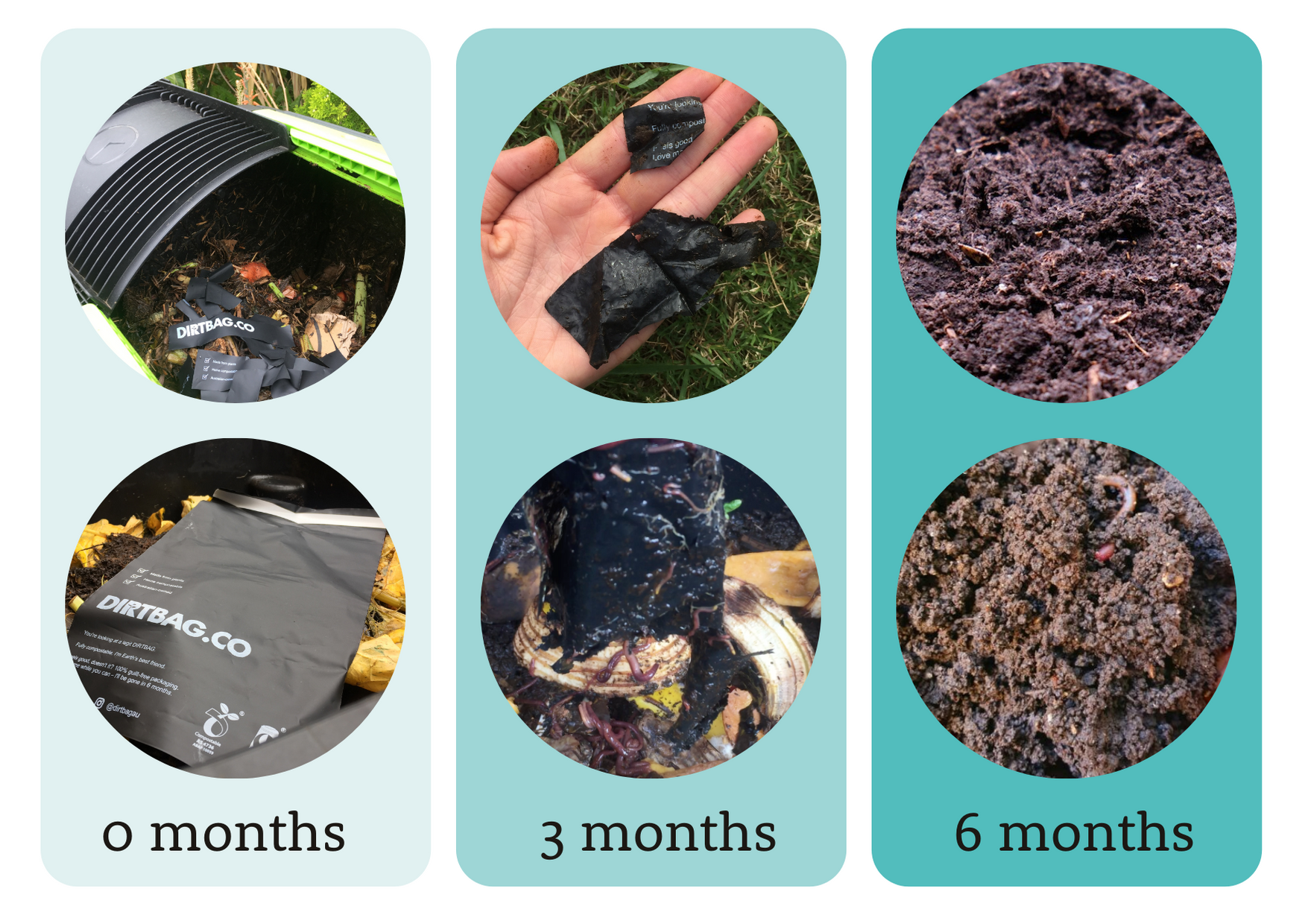“Biodegradable”, “compostable”, “home compostable”: The world of single-use plastics is rapidly changing. While reusable alternatives remain the best method of avoiding and reducing waste, a new wave of “greener” single-use plastics are tipped as the future of packaging.
But what does “greener” really mean and (the question we are all asking ourselves)...can I really compost it?
Plastic is made of ‘polymers’ which are long molecules built on a foundation of carbon atoms. Generally, these polymers are derived from non-renewable resources such as crude oil, gas and coal. Bio-based plastics are an alternative type of plastic, derived wholly or partly from renewable biomass sources. They can be separated into two main categories:
- PLA (polylactic acid), commonly made from sugarcane, corn or tapioca; and
- PHA (polyhydroxyalkanoate), made from polymers produced by microorganisms.
The 2017-18 Australian plastics recycling survey found that only 9.4% of plastic consumed in Australia was recycled, meaning that just over 90% was either taken to landfill or entered the natural environment. Here, plastics accumulate and persist for a long period of time, contributing to greenhouse gas emissions and significant environmental pollution.
To reduce this effect, there has been considerable interest in biodegradable, compostable and home compostable plastics. This is where things start to get complicated. While often thrown into the same basket, there are significant differences between biodegradable, compostable and home compostable.
Biodegradable plastic
A biodegradable plastic is one which breaks down under certain environmental conditions into basic elemental components (biomass, water and carbon dioxide). In the natural environment, these conditions aren’t always met and currently, there is no mandatory standard on biodegradability. As a result, the degree and length of biodegradation can vary, resulting in the accumulation of microplastics. So, even if a plastic is advertised as “biodegradable”, it can still take years to degrade and has a significant impact on the environment while doing so.
Compostable plastic
A certified compostable plastic is one which meets the requirements of the Australian Standards AS 4736–2006. This requires the plastic to biodegrade in an industrial composting facility under controlled environmental conditions; meeting the following criteria:
- At least 90% biodegradation within 180 days.
- At least 90% of the plastic material should disintegrate into <2mm pieces in compost within 12 weeks.
- No toxic effects of the resulting compost on plants and earthworms.
- Hazardous substances such as heavy metals should not be present above the maximum allowed levels.
- Plastic materials should contain more than 50% organic materials.
As composters, it is important to keep in mind that our home compost can’t replicate the conditions produced in an industrial composting facility. So, make sure to double check the label and look for the ‘home compostable’ certified logo before adding packaging to your compost.

Home compostable plastic
A certified home compostable plastic is one which meets the requirements of the Australian Standards AS 5810-2010. This requires the plastic to biodegrade in home composting conditions. The requirements of biodegradation remain the same as a certified home compostable plastic except:
- The plastic has 6 months to disintegrate into <2mm pieces.
- The plastic has 12 months to reach at least 90% biodegradation.
So, which should you choose? The murky waters of “biodegradable” plastics means that certified compostable and home compostable plastics are often preferred. But, it is important to remember that their complete biodegradation requires controlled conditions. If they are taken to landfill or enter the natural environment, they will not break down as efficiently and will contribute to environmental pollution. So, as consumers, we need to ensure that:
- Certified compostable plastics are taken to an industrial composting facility; and
- Certified home compostable plastics are taken to either our own compost bin or an industrial composting facility.
But...can you really compost it [certified home compostable plastic]? A rise in online shopping during the pandemic led many to take a closer look at the packaging associated with home delivery. During this time, we saw a number of home compostable packaging options arise. As curious composters, we got in touch with the team at Heaps Good Packaging and arranged to test out some of their Home Compostable Eco Mailers.

Adding one Mailer to the Farm and one to the Eco Tumbler, we spent six months lovingly feeding and aerating the systems. At 3 months, the Mailers were making good progress. They had disintegrated into smaller pieces, which were thin, soft and easily breakable. Check out our video for a closer look!
Despite being tough and durable in the post, the Mailers had completely broken down after 6 months...just in time to harvest some nutrient-rich castings and compost.

So, you can really compost it! But, as you would with any waste, you will need to make sure that your compost has balanced moisture, pH and carbon:nitrogen levels in order for the plastic to break down. To speed things up, you can also try cutting the plastic into smaller pieces.
But, should you really compost it? Home compostable plastics provide an important alternative where reduction and reuse aren’t possible. But, we encourage you to use them thoughtfully. As with all products, we need to consider resources and emissions used along the way.
Let’s keep it simple!
- Try to remove single-use plastics as much as possible from your daily life.
- Try to reuse compostable and non-compostable plastics (and all materials!) as much as possible. For example, try washing and reusing zip-lock bags.
- Choose plastics that can be disposed of responsibly at the end of their life . For example, in your home compost!
At the end of the day, it comes back to the simple mantra of ‘reduce, reuse and recycle’ (afterall, composting is just our way of speeding up nature’s recycling of organic material back into the system).


